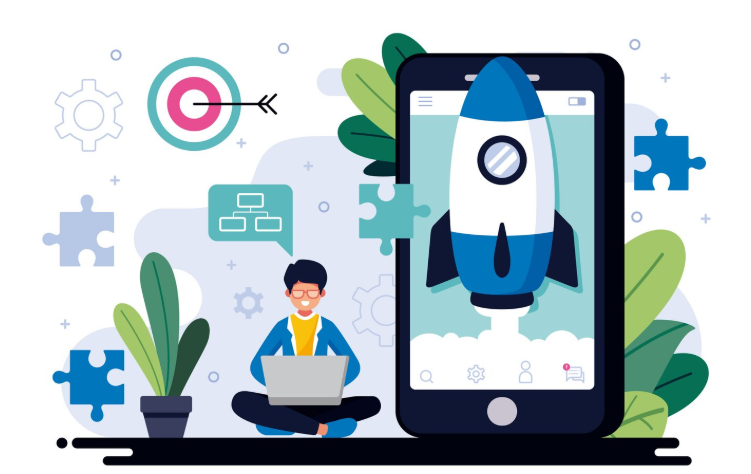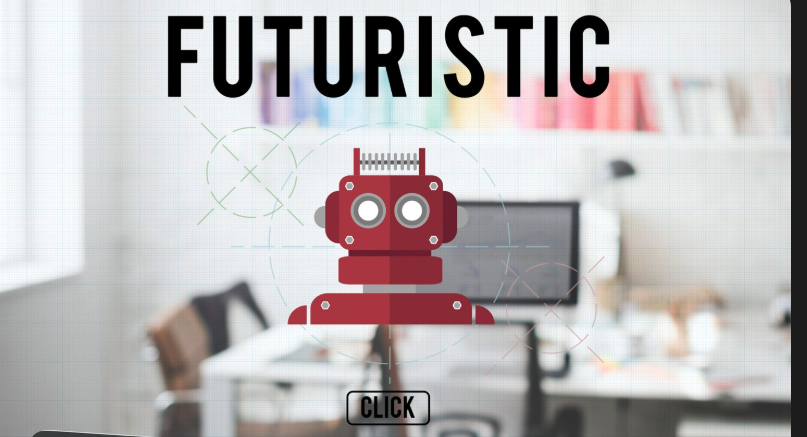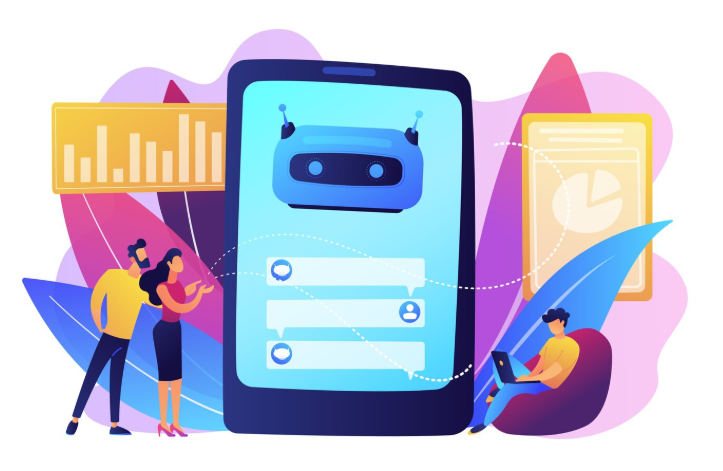
Demystifying AI App Development: Is it Really Free?
The Allure of Free AI App Development
The appeal of building AI apps for free is undeniable. Many aspiring developers are drawn to the potential for creating innovative applications without significant upfront financial investment. This accessibility lowers the barrier to entry, encouraging experimentation and fostering a vibrant community of AI enthusiasts. Platforms offering free tiers, such as Google Cloud’s free trial or Amazon Web Services’ free tier, provide access to powerful AI development tools and machine learning models. This allows developers to learn and build with minimal financial risk.
However, it’s crucial to understand the limitations. “Free often means limited,” meaning you may encounter constraints on processing power, storage, or API call limits. These limitations can significantly impact the performance and scalability of your AI application. While free resources are excellent for learning and prototyping, expect to eventually invest in paid services for larger-scale projects or those requiring more complex AI models, as Google’s free tier, for example, eventually requires paid subscription for heavy use. Successfully navigating this path requires careful planning and resource management from the outset.
Understanding the Costs Involved (Beyond Monetary)
While many resources promise free AI app development, it’s crucial to understand that “free” doesn’t equate to effortless. Significant time investment is required for learning AI programming languages like Python, understanding machine learning algorithms, and mastering relevant APIs. Acquiring these skills demands dedication and consistent effort, representing a substantial hidden cost. Furthermore, you’ll need to factor in the time spent on testing, debugging, and iterative improvements – a process that can span weeks or even months depending on the app’s complexity.
Beyond the time commitment, expect to invest considerable energy in data acquisition and preparation. High-quality training data is the lifeblood of any successful AI application. Finding, cleaning, and preparing this data is often a surprisingly laborious task. For example, training a robust image recognition model might necessitate thousands of meticulously labeled images. This intensive process directly impacts the overall project timeline, potentially exceeding the time spent on actual coding. “Free AI app development truly hinges on your willingness to invest substantial time and effort.”
Navigating the Free vs. Paid Landscape
The world of AI app development offers a surprisingly diverse range of free and paid options. Many cloud platforms, such as Google Cloud Platform (GCP) and Amazon Web Services (AWS), provide free tiers for their AI services. This allows developers to experiment with machine learning models and build simple AI apps without upfront costs. However, these free tiers often have limitations on processing power and data storage. Remember to carefully review the terms and conditions before diving in.
For more advanced features or higher usage, paid options are necessary. These usually involve subscription fees based on your resource consumption. Open-source libraries like TensorFlow and PyTorch are fantastic free resources, reducing the cost of core development. However, you’ll still need to factor in costs like hosting and potentially expert help for complex projects. “Choosing between free and paid depends heavily on your project’s scope and your budget.” Consider starting with free tools to learn and prototype before committing to paid services for scalability and advanced functionality.
Top No-Code Platforms for AI App Creation

User-Friendly Platforms: An Overview and Comparison
Several no-code platforms simplify AI app development, removing the need for extensive coding skills. Popular choices include Bubble, known for its versatility and robust features, allowing you to build complex AI-powered applications by integrating with various APIs. Another strong contender is Appy Pie, offering a user-friendly interface ideal for beginners. Its drag-and-drop functionality makes creating basic AI applications incredibly straightforward. Both platforms provide ample tutorials and support, ensuring a smooth learning curve for newcomers to AI app development.
Choosing the right platform depends on your project’s complexity and your technical expertise. Bubble shines with its scalability and advanced features, making it suitable for larger, more sophisticated AI applications. However, its learning curve may be steeper for absolute beginners. Appy Pie, on the other hand, prioritizes ease of use, making it perfect for quickly building simpler AI-powered apps. “Ultimately, the best platform is the one that best suits your specific needs and skill level.” Consider experimenting with free trials to determine which platform best aligns with your project vision and technical capabilities.
Step-by-Step Guide: Building a Simple AI Chatbot
Let’s build a simple AI chatbot using a no-code platform like Dialogflow CX (formerly Dialogflow Enterprise Edition). First, design your chatbot’s conversation flow. Define intents, which represent user goals (e.g., “greeting,” “order tracking”), and create corresponding entities, representing specific pieces of information (e.g., order numbers, product names). Dialogflow’s visual interface makes this intuitive, even for beginners. Remember to carefully plan your chatbot’s responses for various scenarios. Consider integrating with external services like email or CRM systems for a more robust solution. This allows your chatbot to access and provide real-time information.
Next, train your chatbot using sample user interactions. Provide diverse examples of how users might phrase their requests for each intent. This ensures your chatbot correctly understands user input. After training, test your chatbot thoroughly. Simulate various user interactions to identify and fix any gaps in its understanding or responses. Dialogflow offers robust testing tools to help with this process. “Once satisfied, deploy your chatbot to a platform like Google Chat, Facebook Messenger, or your own website, making your AI app accessible to users.” This simple approach leverages the power of a leading AI platform to easily create a functional AI chatbot without any coding knowledge.
Advanced Features and Limitations of No-Code Tools
No-code AI platforms offer impressive capabilities, streamlining the development process significantly. Many provide pre-built AI models and easy-to-use interfaces for tasks like image recognition, natural language processing, and chatbot creation. This accessibility lowers the barrier to entry for developers of all skill levels. However, remember that customization options might be limited compared to coding from scratch. For instance, you may find it difficult to integrate niche AI models or modify core algorithms. These limitations are inherent to the “no-code” approach itself.
While these platforms are excellent for rapid prototyping and simpler applications, complex projects might require more granular control. Consider the scalability of your envisioned application; some no-code tools struggle with high user volumes or large datasets. “Choosing the right platform depends heavily on your project’s specific needs and complexity.” Therefore, it’s crucial to thoroughly research the capabilities of different platforms before committing to one, focusing on features like model deployment options, API integrations, and data handling capacities. Remember to read user reviews and compare offerings carefully.
Leveraging Free AI Model APIs and Services
Exploring Popular AI APIs and Their Capabilities
Several powerful AI APIs offer free tiers or generous free usage limits. Google Cloud’s Natural Language API, for example, provides sentiment analysis, entity recognition, and syntax analysis at no cost, up to a certain usage threshold. This is perfect for prototyping and building smaller applications. Similarly, Dialogflow (also from Google) facilitates the creation of conversational interfaces, a key feature for many AI applications, with a substantial free tier that allows you to experiment with its features and build basic chatbots. These free services let you experiment and learn before committing to paid plans.
Remember to carefully review the terms of service and usage limits for each API. “Understanding the limitations is crucial to prevent unexpected costs or disruptions during development.” Successfully navigating these free resources is a key skill for any budding AI app developer. Other notable options include Amazon Transcribe for speech-to-text conversion and Microsoft Azure’s Cognitive Services, which offer a wide array of AI capabilities, including image analysis and text translation, all with free tiers available for initial exploration. By strategically utilizing these tools, you can build impressive AI apps without significant upfront investment.
Integrating AI Models into Your No-Code App
No-code platforms democratize AI app development. They empower even those without coding skills to build sophisticated applications. Services like Bubble.io and Glide offer integrations with various free AI model APIs, enabling seamless incorporation of AI capabilities. For example, you could easily add a sentiment analysis feature to a customer feedback app using a readily available API like those provided by Google Cloud Natural Language. This simplifies the process dramatically, allowing developers to focus on user experience and application logic rather than complex backend integration.
Remember to carefully consider the limitations of free tiers. Many free AI model APIs impose usage limits or offer less powerful models compared to paid options. “Thoroughly research and select APIs that align with your application’s needs and expected user volume,” to avoid unexpected disruptions. For instance, a chatbot application requiring high message volume might necessitate migrating to a paid service. Always check the API’s documentation for details on usage limits, latency, and supported functionalities before building your no-code AI application. This proactive approach ensures a smooth development process and avoids costly setbacks down the line.
Addressing API Key Management and Security
Protecting your API keys is crucial for secure AI app development. Treat them like passwords; never hardcode them directly into your application’s code. Instead, utilize environment variables or secure configuration files. This prevents accidental exposure through version control systems like GitHub, a common mistake among novice developers. Consider using a secrets management service, such as those offered by cloud providers like AWS Secrets Manager or Google Cloud Secret Manager, for enhanced security, especially when handling sensitive keys for powerful models like those from OpenAI or Google Cloud AI. These services offer robust access controls and auditing capabilities.
Remember, a compromised API key grants unauthorized access to your AI model, potentially incurring significant costs and compromising your application’s security. Regularly rotate your API keys to mitigate the risk of prolonged unauthorized access. Implement strong authentication and authorization mechanisms within your application to further limit access even if a key is somehow compromised. “Failing to secure your API keys can lead to financial loss and reputational damage; prioritize security from the outset.” Always refer to the specific security documentation provided by the API provider for best practices.
Essential Design and Development Tips for Free AI Apps
User Interface (UI) and User Experience (UX) Best Practices
A user-friendly interface is crucial for the success of any AI app, especially free ones. Poor UX can lead to high uninstall rates, regardless of the underlying AI’s power. Think of apps like Duolingo, which uses gamification and clear progress indicators to keep users engaged. Intuitive navigation is paramount; users shouldn’t struggle to understand the app’s functionality. Prioritize simplicity and clarity in your design. “A well-designed UI/UX translates directly to increased user engagement and positive reviews, which are vital for a free app’s visibility and success.” Consider using clear visual cues and minimizing unnecessary steps. A/B testing different UI elements is recommended to find what resonates best with your target audience.
Effective UX design for free AI apps often relies on providing value upfront. Users need to quickly understand the app’s core benefit. Think about the onboarding process: make it quick, informative, and engaging. Avoid overwhelming users with too much information at once. Consider incorporating tutorials or interactive elements to guide users through the app’s features. Regular feedback mechanisms, such as in-app surveys or ratings, are critical for iterative improvement. Remember, even the most sophisticated AI is useless if users can’t effectively interact with it. “Continuously analyzing user behavior and adapting your UI/UX accordingly is a key strategy for long-term user retention and app improvement.”
Optimizing for Performance and Scalability
Building a free AI app requires careful consideration of performance and scalability from the outset. A poorly optimized app will quickly become slow and unreliable, driving users away. Choose efficient algorithms and data structures. Consider using cloud-based services like AWS or Google Cloud Platform for scalable infrastructure. This allows your app to handle increasing user traffic without performance degradation. Remember, even free apps need to perform well. “A sluggish app, regardless of cost, will quickly lose users.”
Prioritize code optimization. Regularly profile your application to identify bottlenecks. Minimize resource consumption and database queries. Implement caching strategies effectively. Tools like New Relic or DataDog can help you monitor and improve your app’s performance in real time. Think about how your AI model itself scales. Can it handle a sudden surge in requests? Consider techniques like model sharding or distributed computing to ensure your AI app can smoothly manage growth. “Proper planning for scalability is key to the long-term success of any AI application, free or otherwise.”
Monetization Strategies for Your Free AI App (Freemium Models)
Successfully monetizing a free AI app requires a strategic approach. The freemium model, offering a basic free version alongside a premium paid version, is popular and effective. Consider limiting features in the free tier, such as restricting the number of daily queries or the size of uploaded files. This encourages users to upgrade for a more comprehensive experience. Examples include popular apps like Spotify or Dropbox, which use this model successfully.
“The key is to provide genuine value in both the free and paid versions,” ensuring users perceive the premium features as worthwhile. Clearly communicate the benefits of upgrading, highlighting what users gain with the paid subscription. Consider offering a free trial of premium features to allow users to experience the full potential of your AI app before committing to a purchase. This fosters trust and increases conversion rates. Remember, a well-executed freemium model can generate significant revenue while maintaining a large user base.
Real-World Examples of Successful Free AI Apps
Case Study 1: Analyzing a Free AI App’s Success
Let’s dissect the success of a noteworthy free AI app: “Prisma.” This photo editing app leveraged artificial intelligence to transform images into various artistic styles, from Van Gogh to Picasso. Its initial viral success stemmed from its ease of use and the novelty of its AI-powered filters. Users could easily upload photos and instantly receive stylized versions, creating highly shareable content. This virality, combined with a free mobile app model, led to massive adoption.
The app’s success wasn’t solely driven by the novelty factor. Prisma’s developers focused on user experience, creating an intuitive interface. Regular updates introduced new artistic styles and features, maintaining user engagement. Effective marketing across social media platforms also fueled its growth. “Ultimately, Prisma’s story highlights the importance of a compelling AI feature, coupled with a well-executed free app strategy and continuous improvement.” The app’s widespread adoption demonstrates the significant market potential for accessible and engaging free AI applications.
Case Study 2: Learning from a Failed Free AI App
The “TalkToTrees” app aimed to use AI to identify tree species from images. Initially free, it promised effortless nature identification. However, its failure highlights crucial lessons for free AI app development. The app’s image recognition model lacked sufficient training data, leading to inaccurate identifications and a poor user experience. This resulted in negative reviews and low user engagement, ultimately leading to its demise. Insufficient data is a common pitfall.
“TalkToTrees” also suffered from a lack of robust error handling and user feedback mechanisms. Users encountered frequent crashes and were unable to easily report bugs or suggest improvements. Effective user feedback loops are vital for iterative development and improvement, especially in free AI applications reliant on user-generated content. Learning from this failure emphasizes the importance of rigorous testing, comprehensive data sets, and a clear roadmap for iterative updates based on user feedback. Without these elements, even a promising concept can fail to thrive.
Key Takeaways and Lessons Learned
Examining these free AI app success stories reveals crucial patterns. The most impactful apps focused on solving a specific, well-defined problem. They didn’t try to do everything at once. Instead, they mastered one core function exceptionally well. This laser focus allowed for efficient development and easier user adoption. Furthermore, strong user feedback loops were integral to their success. Regular updates and iterative improvements, based directly on user input, were key to maintaining engagement and improving functionality over time. This highlights the importance of user-centric design in AI app development.
“Successful free AI apps rarely emerge fully formed; they evolve through continuous improvement and adaptation.” This iterative development approach, coupled with a clear understanding of user needs, is demonstrably more effective than aiming for immediate perfection. Moreover, effective marketing and community building are essential. These apps often leveraged social media and online forums to reach their target audiences and foster a sense of community around their product. This organic growth strategy, combined with a commitment to ongoing development, has proven to be a recipe for success in the crowded field of AI applications.
Future Trends and Opportunities in Free AI App Development
Emerging Technologies in AI App Development
The landscape of AI app development is rapidly evolving, driven by breakthroughs in several key areas. Generative AI, for example, is opening doors to entirely new app functionalities. Tools like GPT-3 and DALL-E 2 allow developers to create apps capable of generating text, images, and even code, significantly reducing development time and cost. This is particularly impactful for smaller teams or independent developers leveraging free resources. We are also seeing significant advancements in edge AI, allowing AI processing to occur directly on devices rather than relying on cloud servers. This leads to faster response times, reduced latency, and improved privacy, making it ideal for resource-constrained applications like mobile apps.
Further fueling the growth of free AI app development is the proliferation of open-source AI models and development frameworks. Projects like TensorFlow and PyTorch provide robust tools and pre-trained models, dramatically lowering the barrier to entry for aspiring developers. “This democratization of AI technology is crucial for fostering innovation and empowering a wider range of individuals and businesses to build AI-powered solutions.” The availability of free cloud computing resources from providers like Google Cloud and AWS, via their free tiers, further enhances the accessibility of building even complex AI apps without significant upfront investment. This makes the future of free AI app development incredibly exciting and brimming with potential.
Opportunities for Innovation and Monetization
The explosion of free and open-source AI tools presents unprecedented opportunities for innovation in app development. Developers can leverage powerful models like those offered by Hugging Face to build sophisticated applications without significant upfront costs. This lowers the barrier to entry, fostering a more diverse and creative app ecosystem. Consider the recent surge in AI-powered image generators; many are built using freely available models, demonstrating the potential for rapid innovation and market disruption. Free AI development tools democratize access to cutting-edge technology, enabling even individual developers to compete with larger companies.
Monetization strategies for free AI apps are diverse and evolving. Subscription models, offering premium features or increased usage limits, are common and successful. Another approach is through in-app advertising, though careful implementation is crucial to maintain user experience. Direct sales of AI-generated content or services is another viable option, particularly for apps focused on creative tools or specialized data analysis. Furthermore, exploring partnerships with businesses to integrate AI features into their existing products presents a powerful monetization avenue. “The key is to identify a valuable service that your AI app can offer and then devise a monetization strategy that aligns with the needs and preferences of your target audience.”
Staying Ahead of the Curve: Continuous Learning Resources
The landscape of free AI app development is constantly evolving. To remain competitive, continuous learning is crucial. Leverage online resources like Google AI’s open-source projects and free courses offered by platforms like Coursera and edX. These platforms provide structured learning paths covering various AI techniques, from machine learning fundamentals to advanced deep learning models. Regularly engaging with these resources ensures you stay updated on the latest advancements and best practices.
Staying informed also involves actively participating in the AI community. Follow influential blogs, podcasts, and researchers in the field. Attend webinars and online conferences. “Engaging with these communities fosters knowledge sharing and allows you to learn from the experiences of other developers.” This proactive approach to continuous learning is essential for building innovative and successful AI apps using free tools and resources. Remember, the ability to adapt and learn quickly is paramount in this fast-paced environment.




